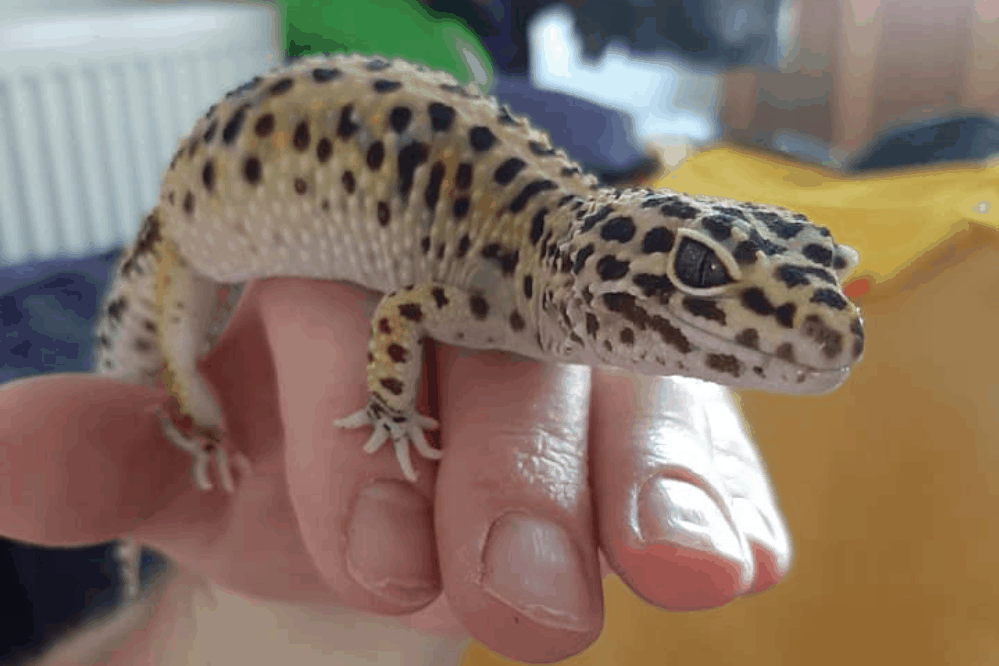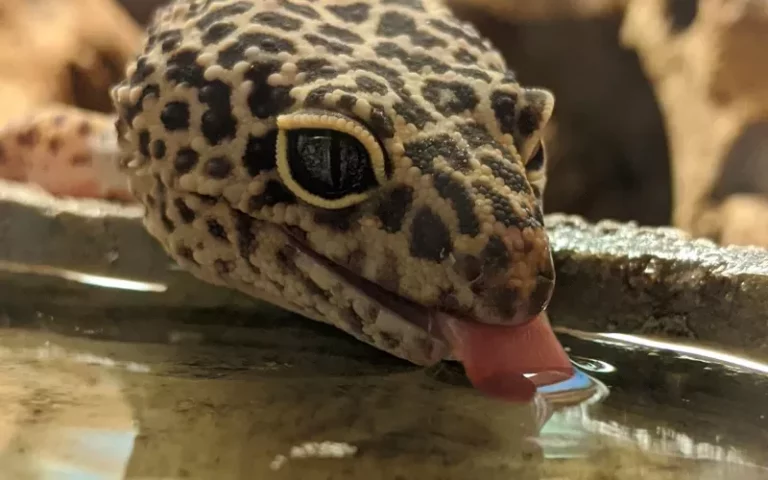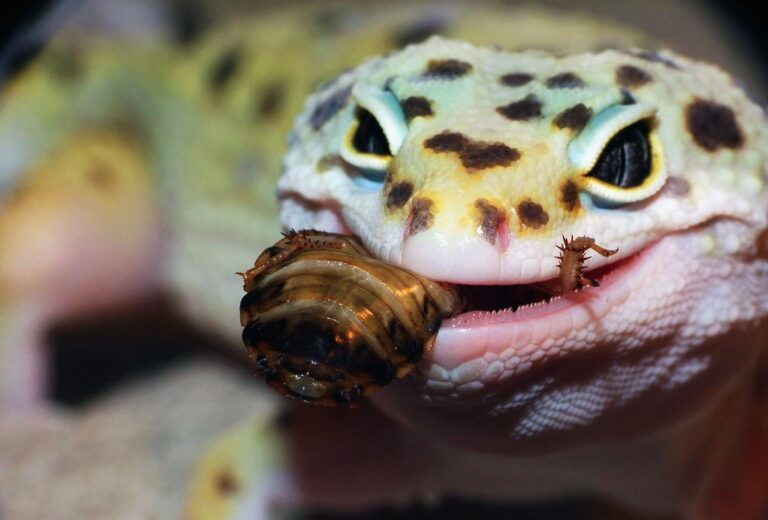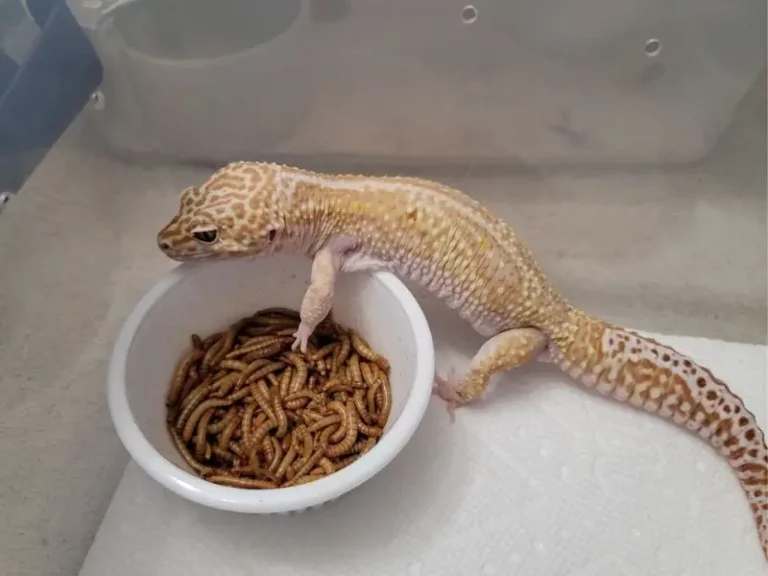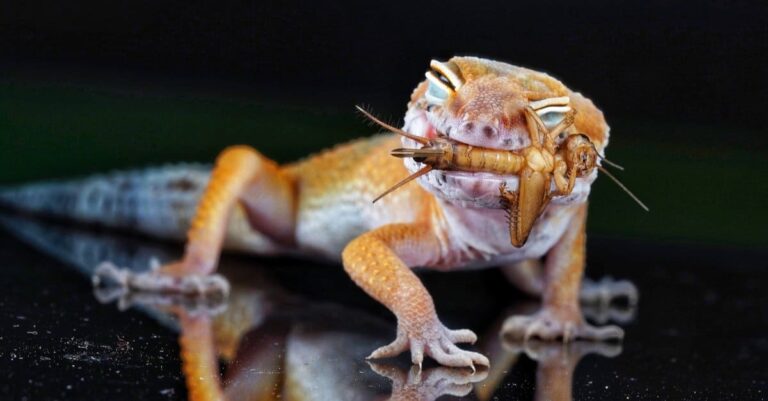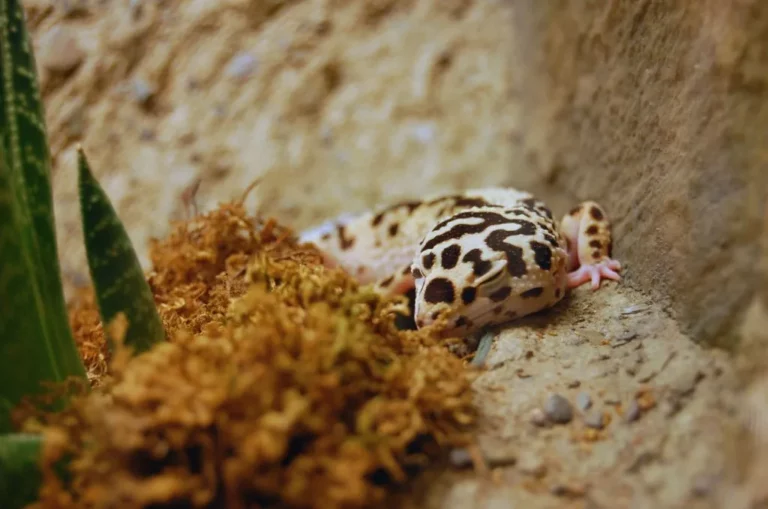How To Tame A Leopard Gecko? Tips And Tricks Revealed
A warm summer’s day when I brought home my first leopard gecko, a vibrant wonder named Leo. My excitement soared as I introduced him to his new home. But Leo wasn’t as thrilled about our partnership. He darted away at the slightest movement, his eyes filled with nervousness.
So, building trust and forming a bond with this captivating creature became my ultimate goal. It wouldn’t be easy, though. They are known for their shyness and skittish nature, often bolting at the slightest provocation.
Nevertheless, I was determined to uncover their secrets, understand their needs, and, most importantly, learn how to tame them.
How To Tame A Leopard Gecko? Here are ticks
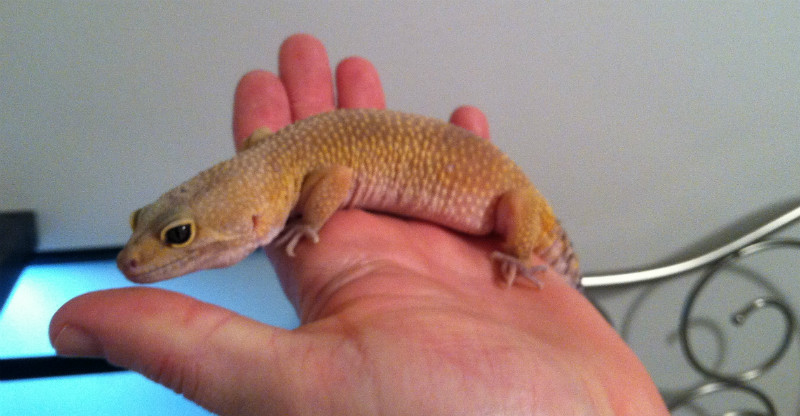
To ensure your leopard gecko feels at ease, provide two hiding spots and a shedding box. Let your gecko adjust to its new home without handling for the first 3 weeks. Afterward, begin hand feeding to build trust. Avoid making sudden movements that might startle your gecko. Speak softly around them, and when you start handling them, do it carefully.
Therefore, let’s plunge in together if you’re prepared to set off on a fruitful journey into the world of leopard gecko care and learn how to tame these fascinating reptiles.
Provide Essential Hiding Spots and a Shedding Box
Begin by ensuring the habitat is equipped with two vital components: hiding spots and a dedicated shedding box. In the initial weeks, your gecko is likely to seek refuge and privacy.
To meet this need, offer two hideouts—one on the warmer side of the enclosure and another on the cooler side. Additionally, include a shedding box filled with a moisture-retaining substrate like vermiculite.
Neglecting these hiding spots can leave feeling exposed and vulnerable, potentially impeding the taming process. When it feels secure, the process of building trust becomes significantly smoother.
Prioritize Acclimation for a Fear-Free Gecko
Additionally, Immediately after introducing your pet to its new home, grant it ample time to acclimate to its unfamiliar surroundings. This period is of paramount importance, as your gecko may initially be apprehensive and prone to defensive behaviors.
During the first three weeks following its arrival, avoid handling your gecko altogether. Allow it to adjust and refrain from touching or interfering with it during this crucial period. In the first week, it’s advisable to minimize your presence around the enclosure. Afterward, sit quietly and observe during its active evenings when it can perceive your presence without feeling threatened.
Nevertheless, this doesn’t imply complete isolation. Make periodic visits to the enclosure throughout the day without attempting to handle or touch it. Instead, focus on tasks such as placing food in the bowl or refreshing its water.
To foster comfort, position the food bowl near one of the hiding spots to ensure your gecko feels secure while eating. Gradually, over time, move the food bowl farther away to encourage exploration.
To ensure a smooth acclimation process, approach all tasks slowly, and maintain clean, lotion-free hands when interacting with your gecko. Over the week, you’ll notice the curiosity as it begins to approach, smell, and even lick your hand.
Initiate Hand Feeding to Build Trust (Without Handling)
During the first two weeks, offer food in its bowl. It’s essential that your buddy can see you as the provider of its meals during this phase, as it fosters trust. Be prepared for the possibility of your gecko refusing food for a few days to a week after arriving in its new environment.
After approximately three weeks of acclimatization, you can introduce hand feeding as a powerful bonding tool. Place a few insects on your hand and offer them. Make sure you remain steady and avoid sudden movements if it bites or retrieves insects from your hand. Sudden actions can undo the trust-building progress.
Furthermore, it will associate you with positive experiences, as food becomes a link between your presence and nourishment. Avoid initiating hand feeding within the initial two weeks, as this might instill fear rather than nurturing a bond. Waiting a bit longer to verify and enhanced comfort.
When introducing your hand into the enclosure, do so slowly from the side rather than from above. Observe reaction to gauge its interest.
In cases where your gecko displays aggression even after two weeks, continue to provide food in a bowl and keep your hand nearby while it eats. Cooperative eating in your presence is a positive sign of progress.
Maintain Stability in the Gecko’s Habitat
A fundamental rule is to refrain from altering any aspect habitat for at least a month. Consistency in the enclosure’s layout, including accessory placement and tank location, allows your gecko to acclimate and fosters trust.
This underscores the importance of preparing the habitat before it is arrival. However, if you’ve recently acquired it, make any necessary adjustments promptly to accommodate its needs.
Creating a stable and predictable environment is pivotal in building trust and expediting the taming process.
Exercise Gentle and Consistent Movements
Abrupt or jerky movements should be avoided at all costs, as they can cause extreme fear in leopard geckos, whether they are new additions or long-time companions.
Foster Trust with a Soft Voice and Avoid Loud Disturbances
Speaking in a gentle, soothing tone around your gecko can significantly aid in the taming process by allowing it to familiarize itself with your voice. Conversely, refraining from loud shouting, playing loud music, or having a blaring TV near the enclosure is essential, as leopard geckos find such disturbances highly distressing.
Gradually Introduce Handling Sessions After 3-4 Weeks
Following the initial two weeks of acclimatization, your furry should begin to trust you more. During the third week, commence hand feeding. If your gecko exhibits comfort during this phase, you can gradually introduce handling sessions.
Begin with brief sessions, starting at around 5 minutes and extending them by a minute every other day. Handle it every other day, preferably in the evening when it’s awake. Never disturb your gecko while it sleeps, as this can lead to stress and irritation. Crucially, avoid picking up during the first week of handling; instead, allow it to climb onto your hand voluntarily.
During the initial week of handling, focus on simply letting it become accustomed to your touch without initiating stroking. After the first week and is at ease, gently begin stroking it, starting with just a few gentle touches to prevent any undue fright.
Handle Your Gecko Before Feeding to Establish Positive Associations
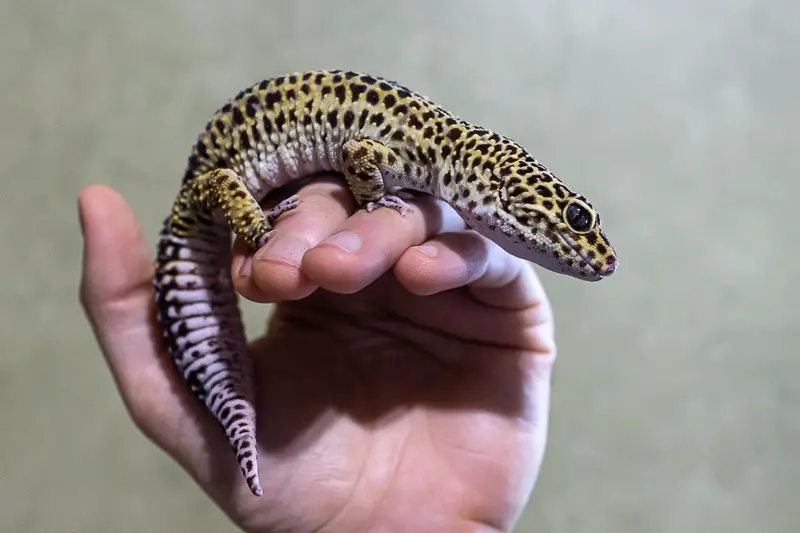
Handling your leopard gecko before feeding is a vital practice. It teaches it that your presence is synonymous with positive experiences, particularly mealtime. Handling after feeding can lead to regurgitation and unwanted messes.
Prioritize Safe Handling Techniques
Safe handling techniques are of utmost importance to maintain trust. Any accidents during handling can erode your gecko’s trust. Avoid positioning your hand above your leopard gecko, as it may perceive this as a threat. If your enclosure lacks front-opening doors, introduce your hand slowly from the side, away from your buddy.
During handling, allow your gecko to move freely on your hands, avoiding confinement to a single spot. After several successful handling sessions, begin slowly lifting it a few inches from the ground, introducing a new experience for your companion.
Simple Overview :
| Week | Action and Time (Daily) |
| Week 1 | Place your hand in the tank for 5-7 minutes, gradually getting closer. |
| Week 2 | Stroke the gecko or have your hand in the tank for 7-10 minutes daily. On meal days, feed from hand. |
| Week 3 | Gently pick up the gecko (low height) for 5-7 minutes. |
| Week 4 | Lift the gecko to a low-medium height for 7-10 minutes. |
| Week 5 | Raise the gecko to medium height for 10-15 minutes. Begin hand walking. |
| Week 6 | Lift the gecko with a second hand on top for 10-15 minutes. Continue hand walking. |
| Week 7 | Handle the gecko for up to 15 minutes, allowing exploration. Continue hand walking. |
FAQs
Can you tame both young and older leopard geckos?
Yes, both young and older leopard geckos can be tamed, but younger ones tend to adapt more quickly to handling.
How long does it take to tame a leopard gecko?
The time it takes to tame a leopard gecko varies but generally spans several weeks to a few months, depending on the gecko’s temperament and your consistency in handling.
Are leopard geckos good for taming?
Leopard geckos are known for being relatively docile and can become good pets for taming, especially when started at a young age.
Do Start Leopard Gecko Handling Early?
Yes, it’s beneficial to start handling leopard geckos early, especially when they are babies. Early handling can help build trust and make the taming process smoother.
How To Tame A Baby Leopard Gecko?
To tame a baby leopard gecko, start with acclimatization, gradually introduce handling, and use positive reinforcement techniques like hand-feeding to build trust. Be patient and gentle throughout the process.
Final Words
In conclusion, taming a leopard gecko has been an incredibly rewarding journey. Starting with patience and understanding, I allowed my gecko to acclimate to its new environment and slowly built trust through gentle interactions. Hand-feeding became a bonding ritual, and over time, handling sessions transformed my gecko from a skittish baby into a more confident companion.
As I progressed through the weeks, I witnessed a remarkable transformation in my gecko’s behavior and temperament. It became apparent that time, consistency, and a gentle approach were the keys to success. Through positive reinforcement and respect for my gecko’s comfort, we forged a strong bond, making every moment together a cherished experience.
Taming it isn’t just about training a pet; it’s about nurturing a unique connection and gaining a deeper appreciation for these incredible creatures. Patience truly pays off, and the journey is as rewarding as the destination.

